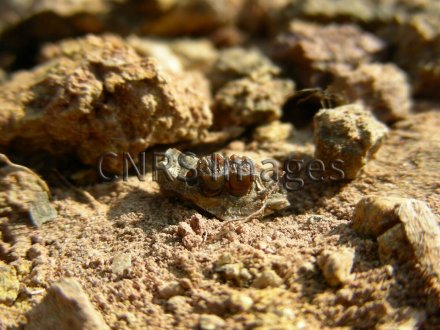Production year
2006

© Laurent MARIVAUX/ISEM/CNRS Images
20090001_1059
Fragment de maxillaire de rongeur vieux de 37 millions d'années, mis au jour par les fortes précipitations de la mousson annuelle au Myanmar. Ce rongeur constitue comme bien d'autres restes de mammifères, la "faune associée" de la communauté de primates ("Ganlea, Pondaungia, Amphipithecus, Myanmarpithecus, Bahinia, Paukkaungia, Kyitchaungia") étudiés dans le cadre de recherches paléontologiques sur l'origine asiatique des primates anthropoïdes, les premiers rameaux de nos origines. Toutes les informations recueillies par les différents spécialistes permettent de reconstituer, en partie, les conditions paléoenvironnementales dans lesquelles vivaient nos lointains cousins, les premiers primates anthropoïdes.
The use of media visible on the CNRS Images Platform can be granted on request. Any reproduction or representation is forbidden without prior authorization from CNRS Images (except for resources under Creative Commons license).
No modification of an image may be made without the prior consent of CNRS Images.
No use of an image for advertising purposes or distribution to a third party may be made without the prior agreement of CNRS Images.
For more information, please consult our general conditions
2006
Our work is guided by the way scientists question the world around them and we translate their research into images to help people to understand the world better and to awaken their curiosity and wonderment.